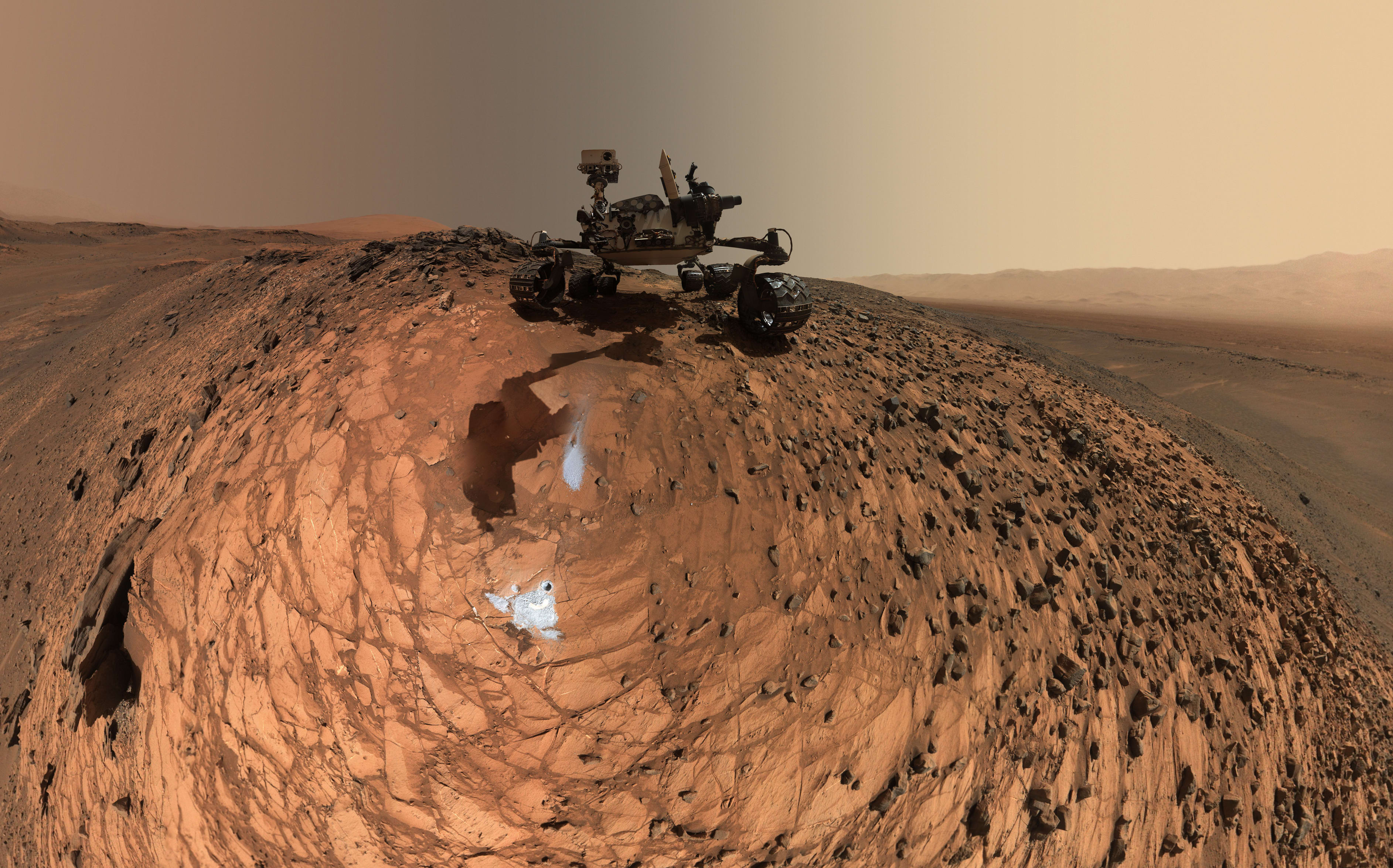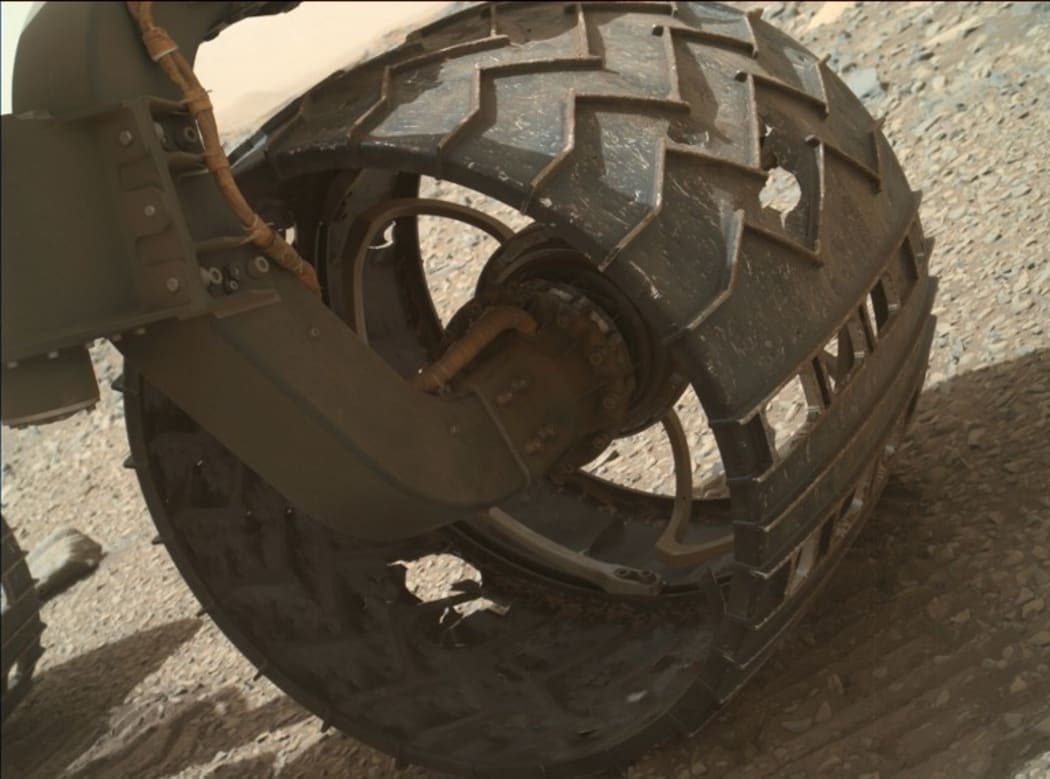The US space agency has issued another of the selfie portraits acquired by the Curiosity rover on Mars.

Curiosity's latest selfie. Photo: AFP/ NASA/JPL-CALTECH/MSSS
Nasa tries to make one of these mosaics at every location where the robot drills into the surface.
The latest picture was taken by the rover at Buckskin - the seventh rock target on the mission to provide a sample for analysis.
The portrait differs from previous ones in that it is taken from a low angle.
Curiosity manages this smart piece of planetary photography in the same way that any human would take a selfie - by holding a camera at arm's length and framing its own form.
The camera used is the "hand lens" known as Mahli. Normally used to study mineral grains in rocks at very close quarters, it can also be focussed on infinity.
Engineers instruct Mahli to send back multiple shots of the rover, after first practising the shoot sequence on a test vehicle kept on Earth.
The pictures must then be stitched together to make the final scene.

A previous selfie captured one of the rover's wheels. Photo: AFP/ NASA/JPL-CALTECH/MSSS
Slightly different arm positions mean only the camera and its turret mount are missing from the finished product, although their shadow is caught on the ground.
At Buckskin, the surface sloped slightly away from the rover, meaning the robot could, on this occasion, get the camera much lower without the risk of banging the hardware on the rock. This made for a new perspective compared with previous selfies, showing more of Curiosity's front and belly.
There are two grey patches in front of the rover. The triangular patch is where the robot drilled Buckskin. A dark 1.6cm-wide circle shows where the hammer tool went into the ground. The grey patch closest to the vehicle is a dump of powdered rock too large in grain size to be sent for analysis in the labs that sit inside Curiosity's body.
The robot has now been on Mars for three Earth years. It is in a deep equatorial bowl known as Gale Crater.
At the centre of this depression is a huge mountain, informally called Mount Sharp. Curiosity is currently climbing through its foothills, examining the rocks as it goes.
The analysis so far has shown the crater to have hosted a lake many billions of years ago. The sedimentary deposits record abundant evidence for the flowing water that must have fed this lake. The conditions back then, say scientists, could very probably have allowed microbial life to flourish - if it ever existed on Mars.
As it climbs the mountain, Curiosity will likely find evidence of the planet's drying. Today, Mars is desiccated and cold. Scientists want to understand when and how this transformation took place.
-BBC

